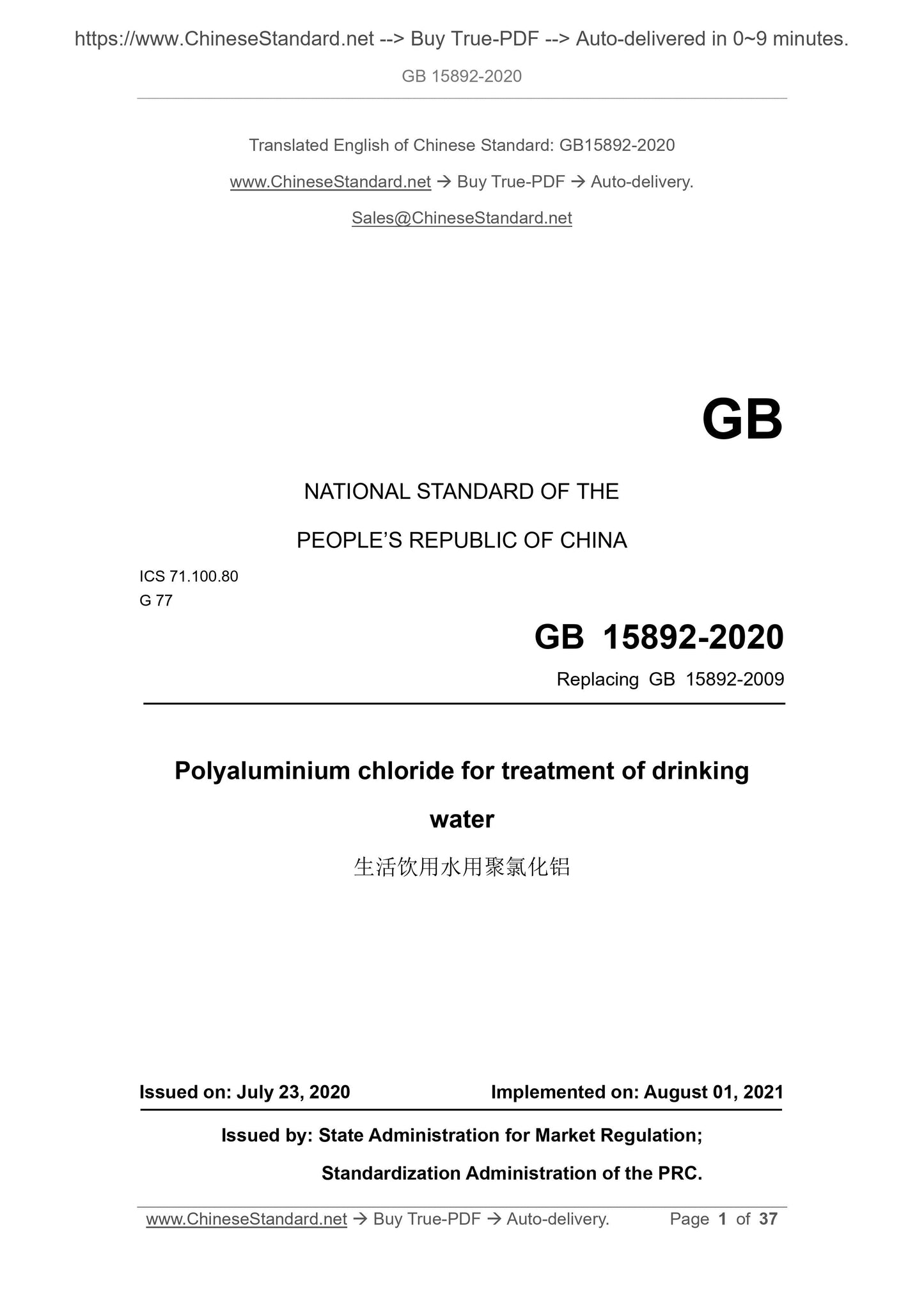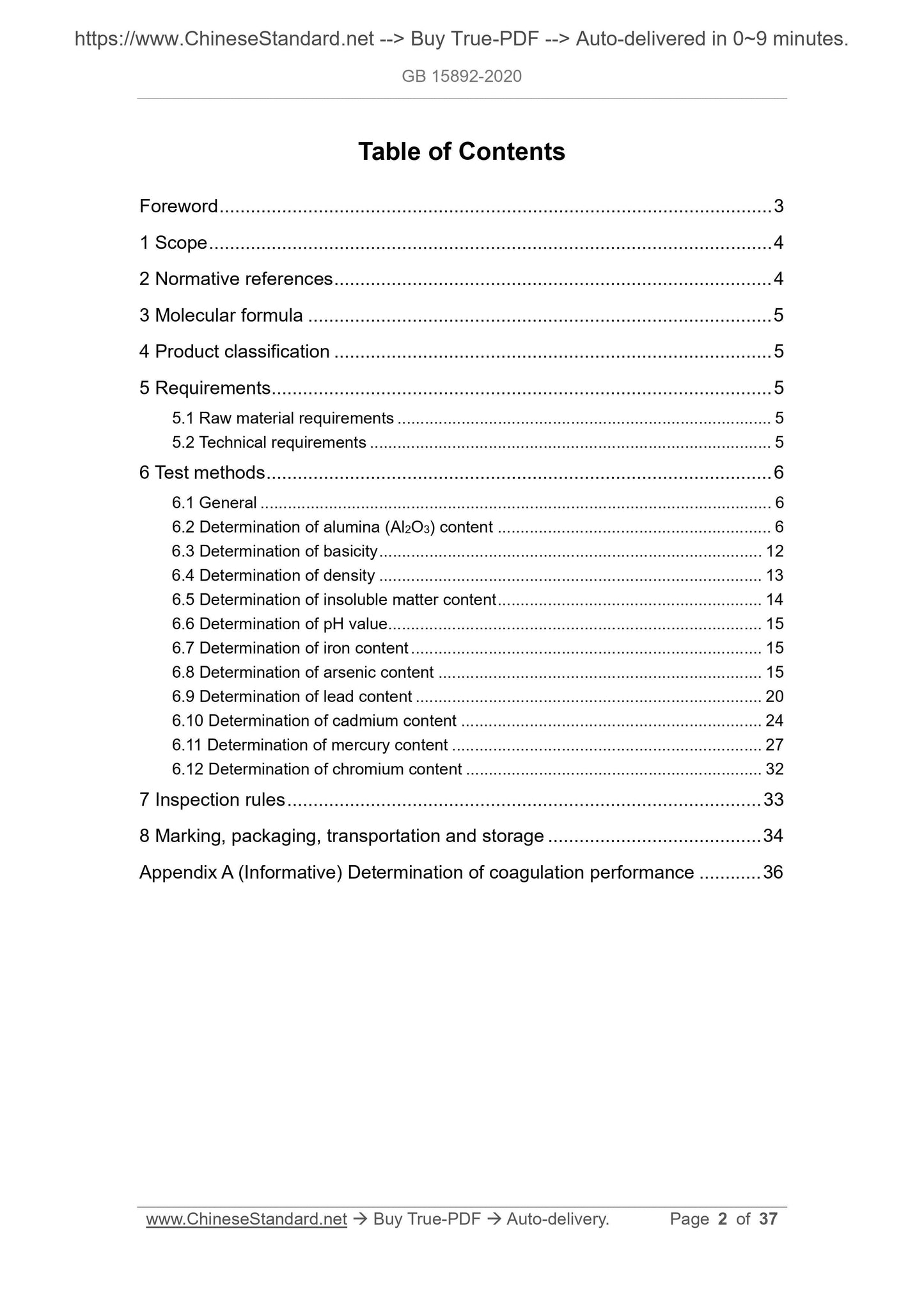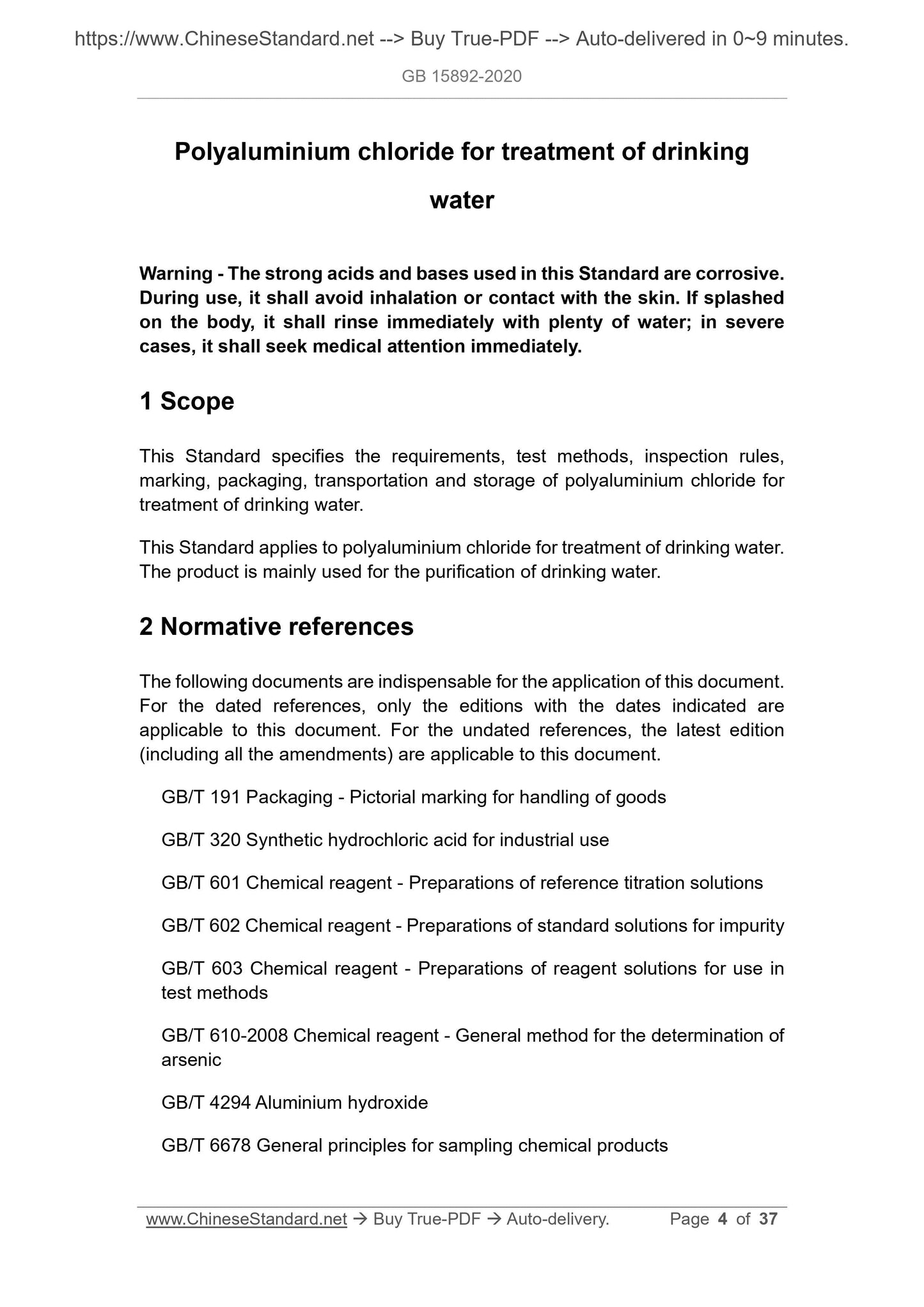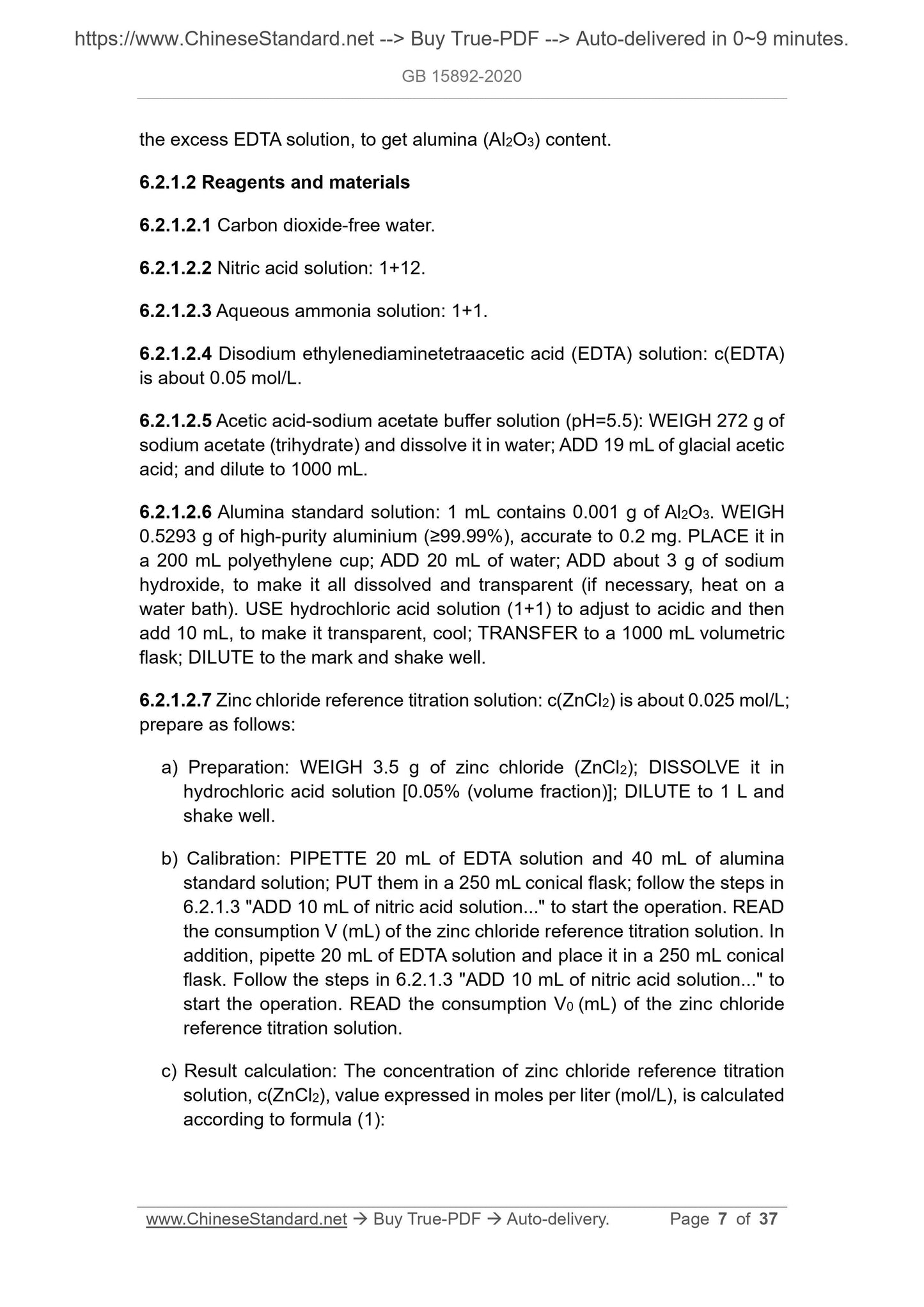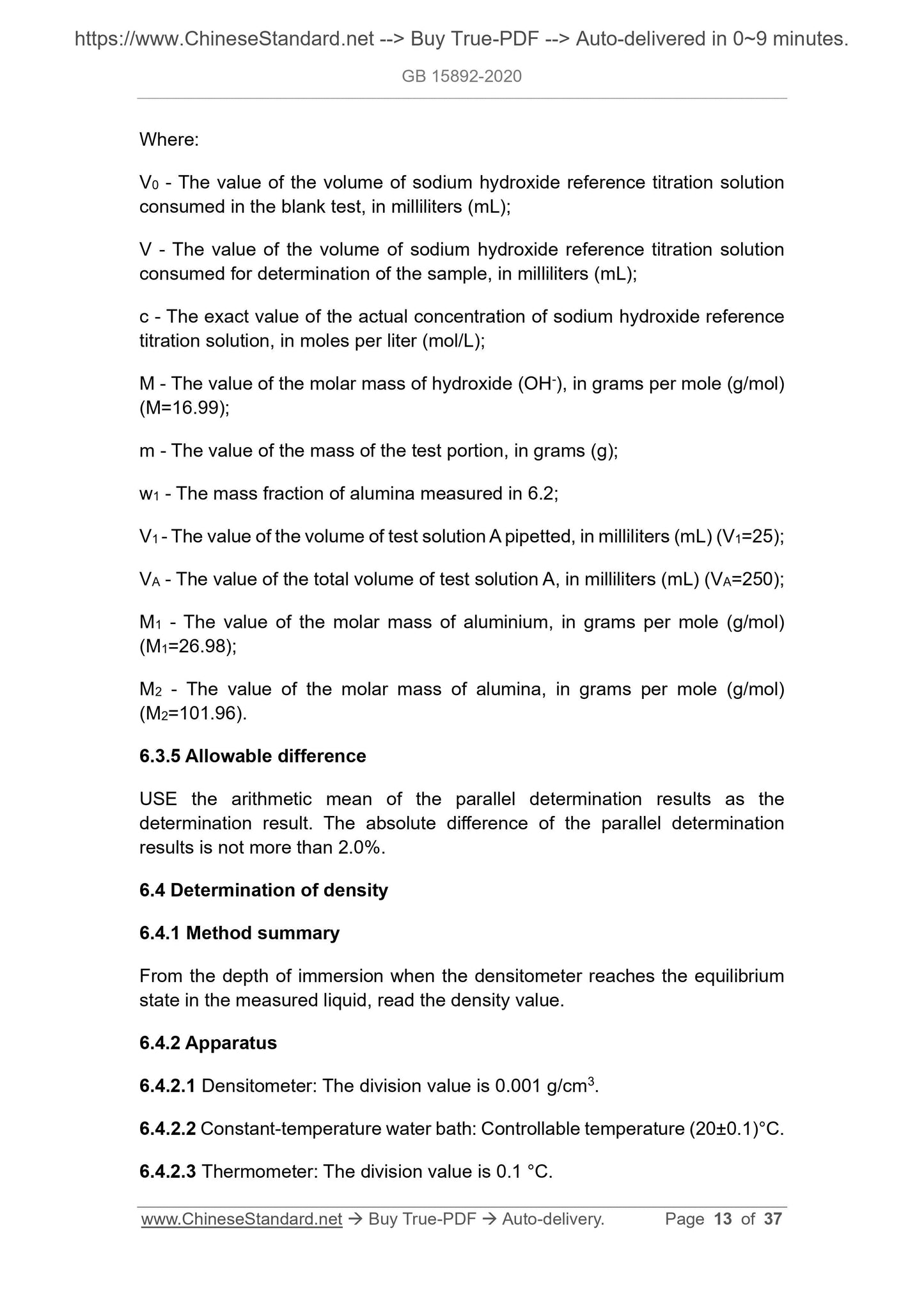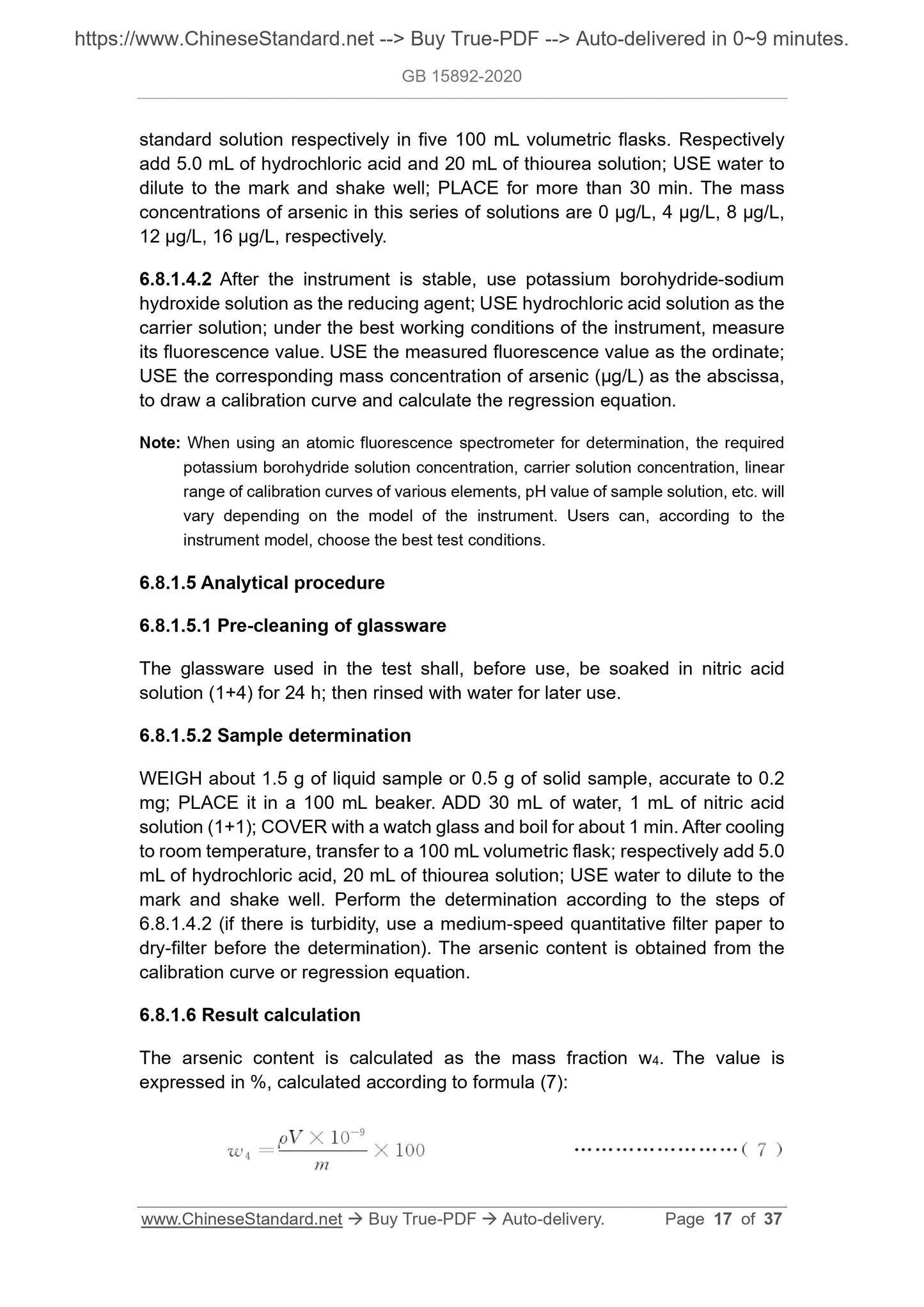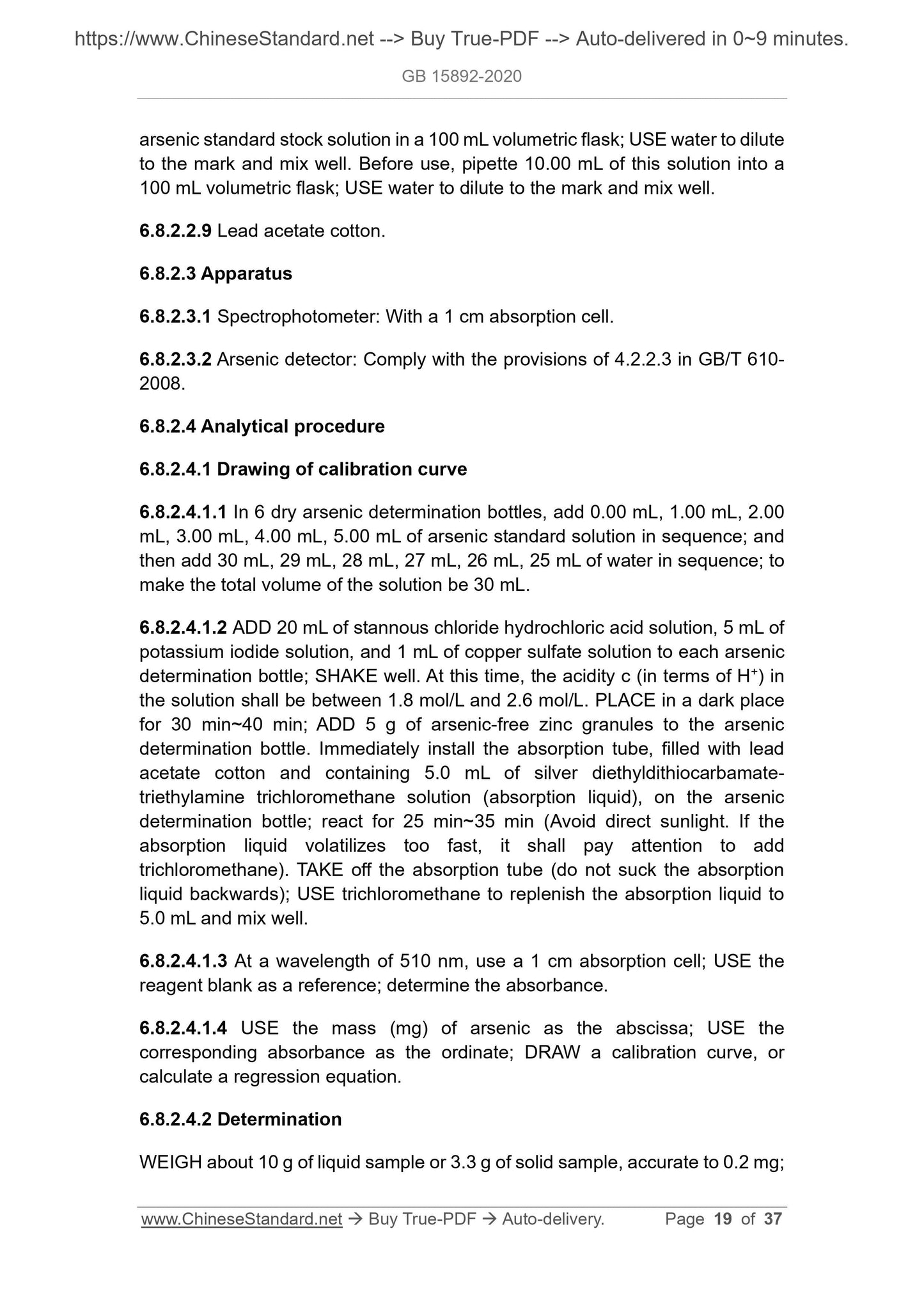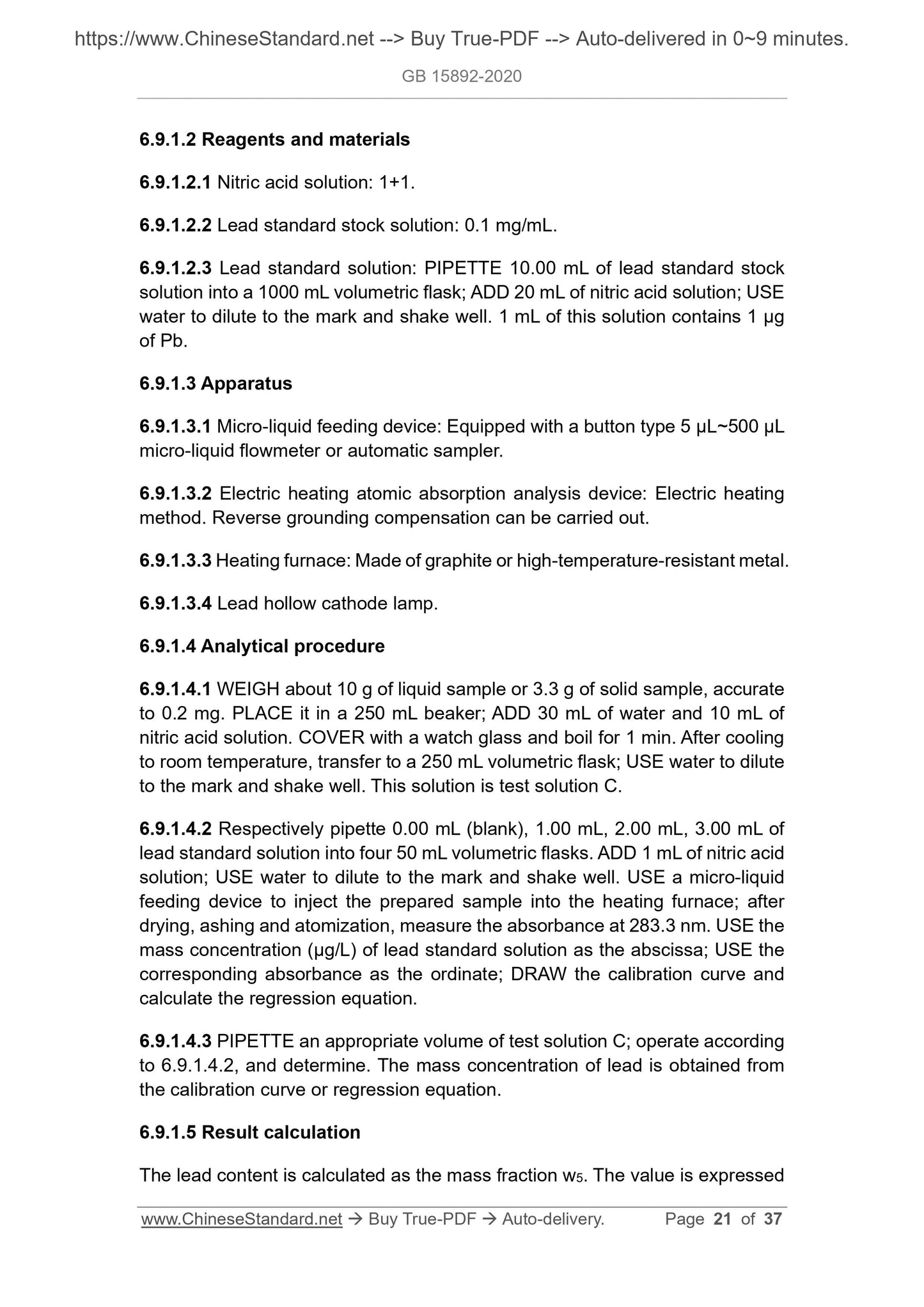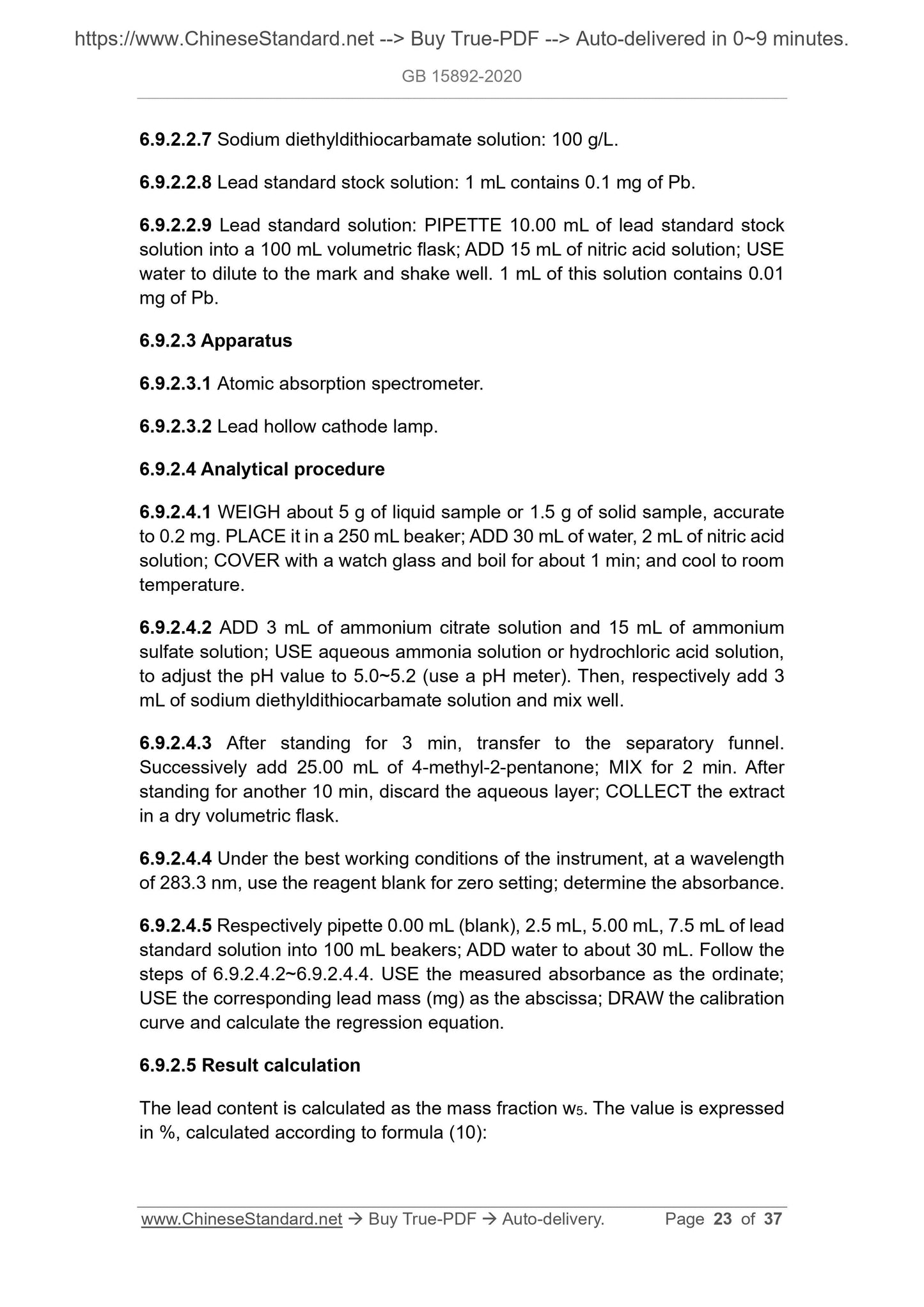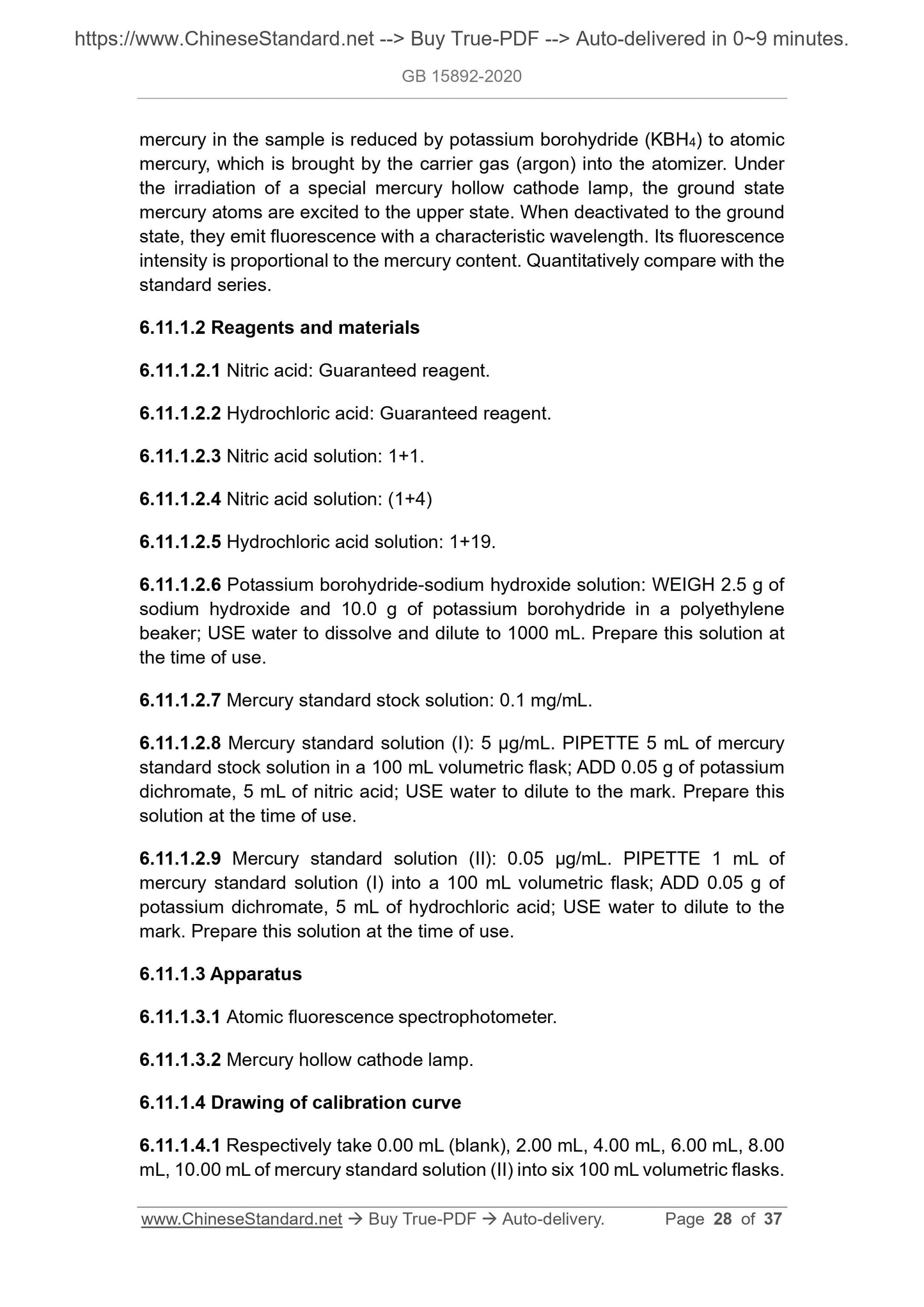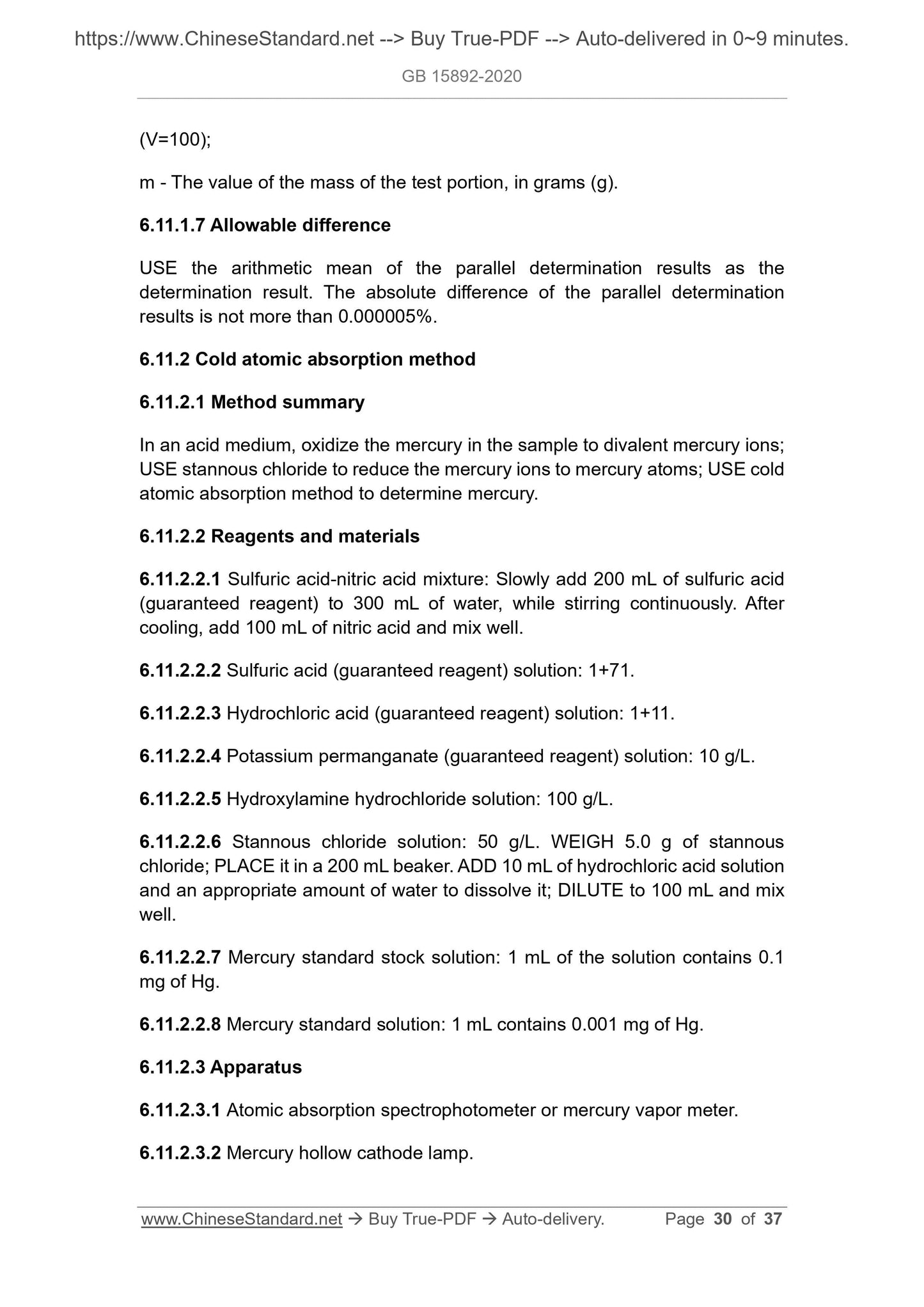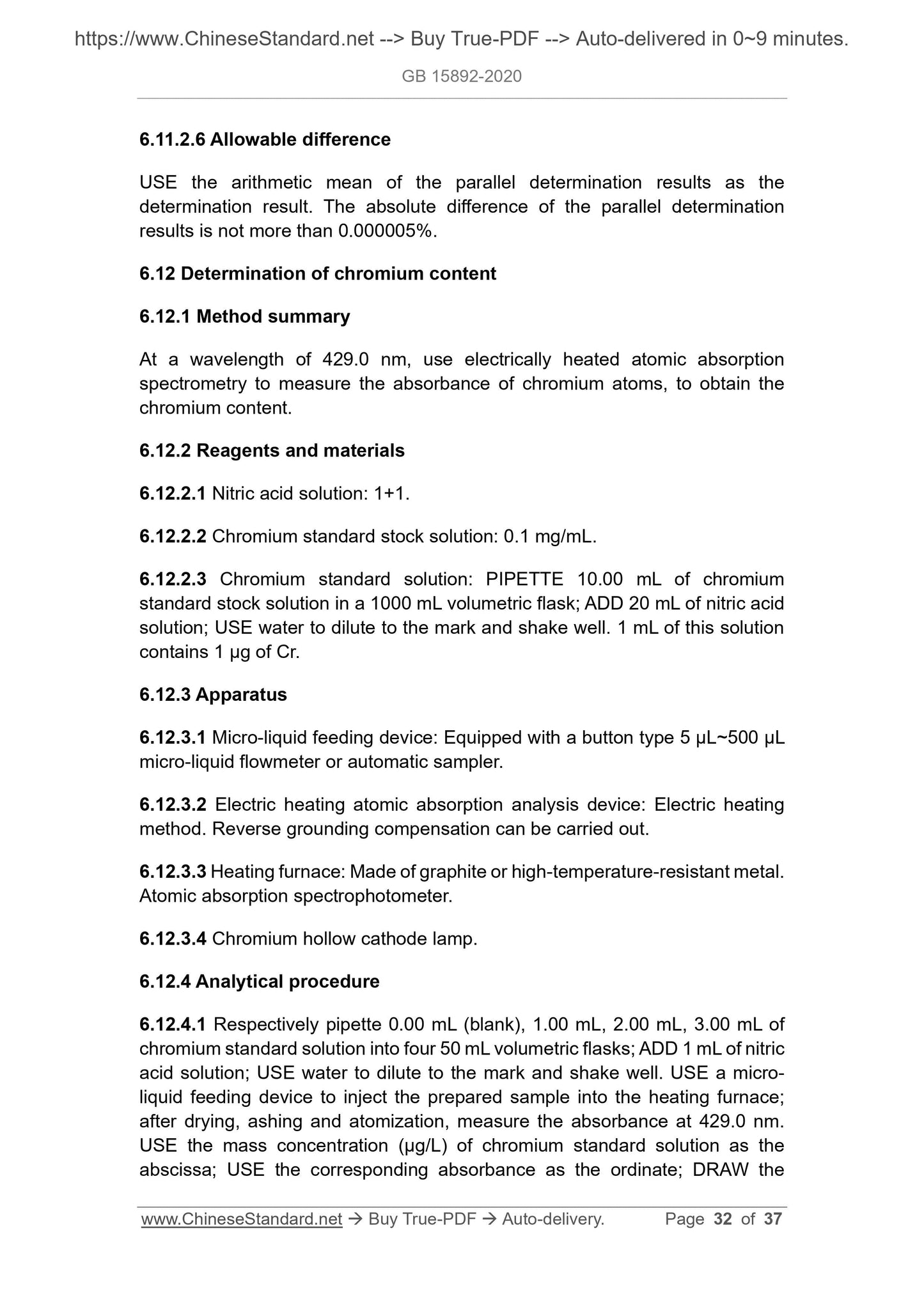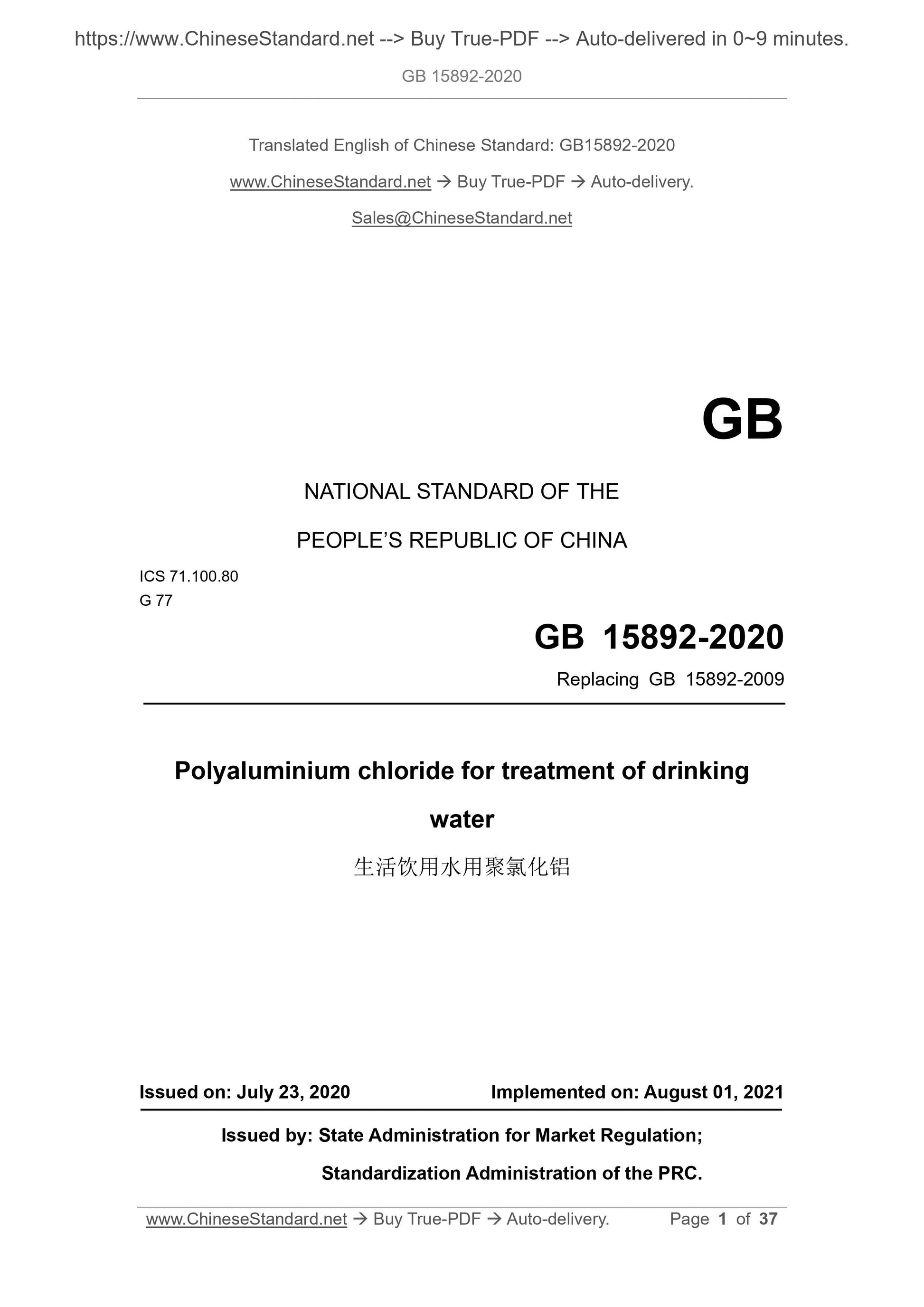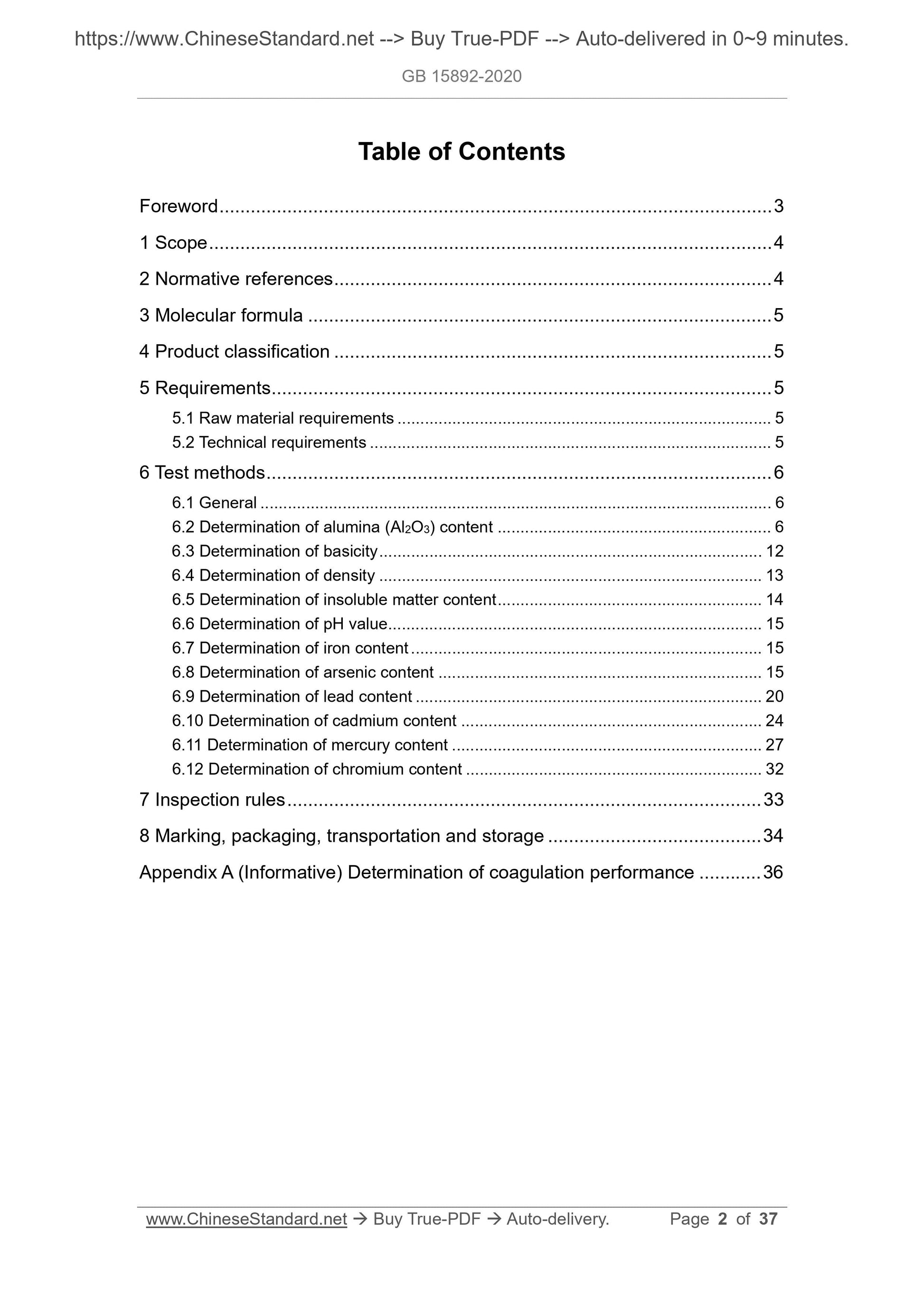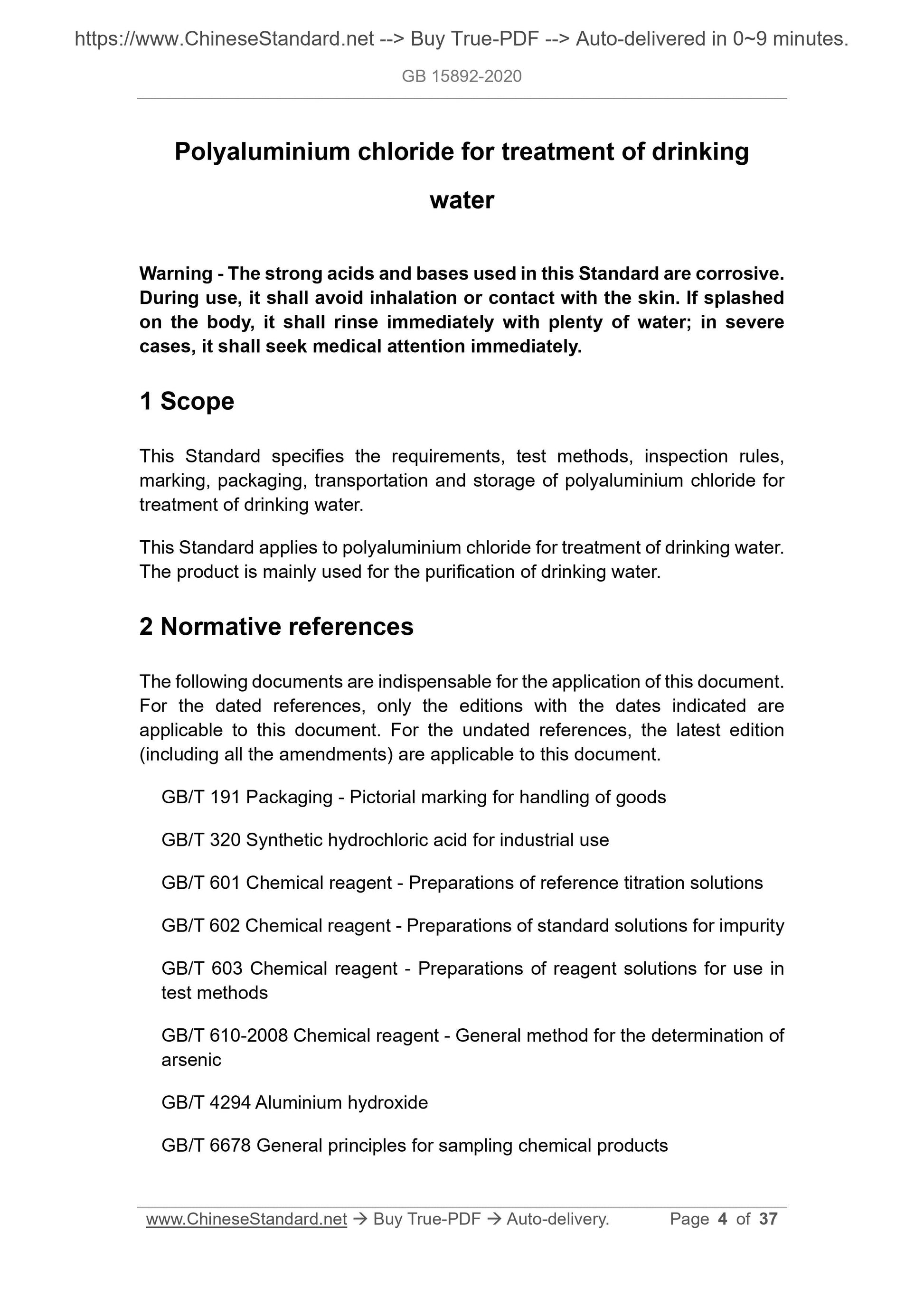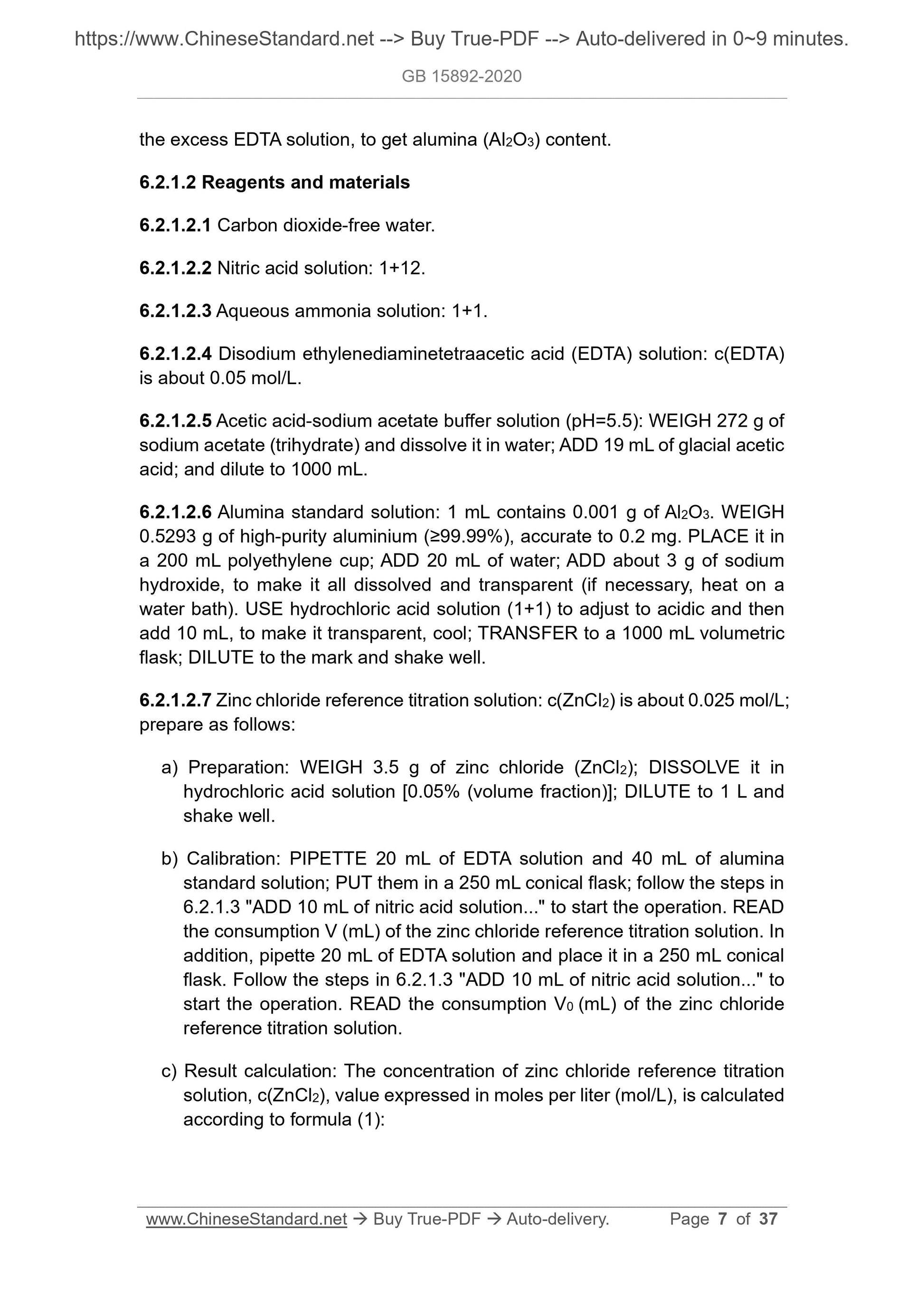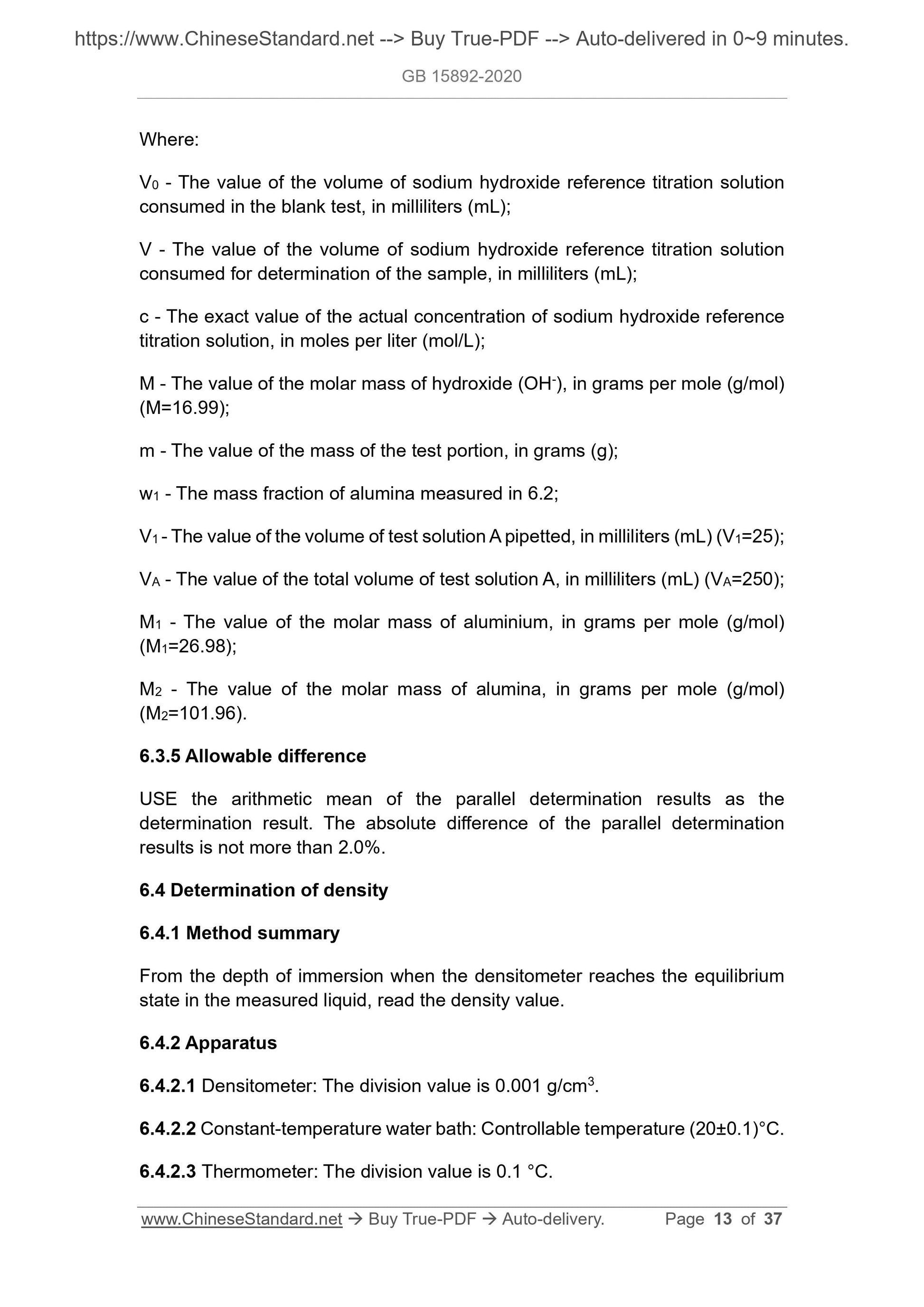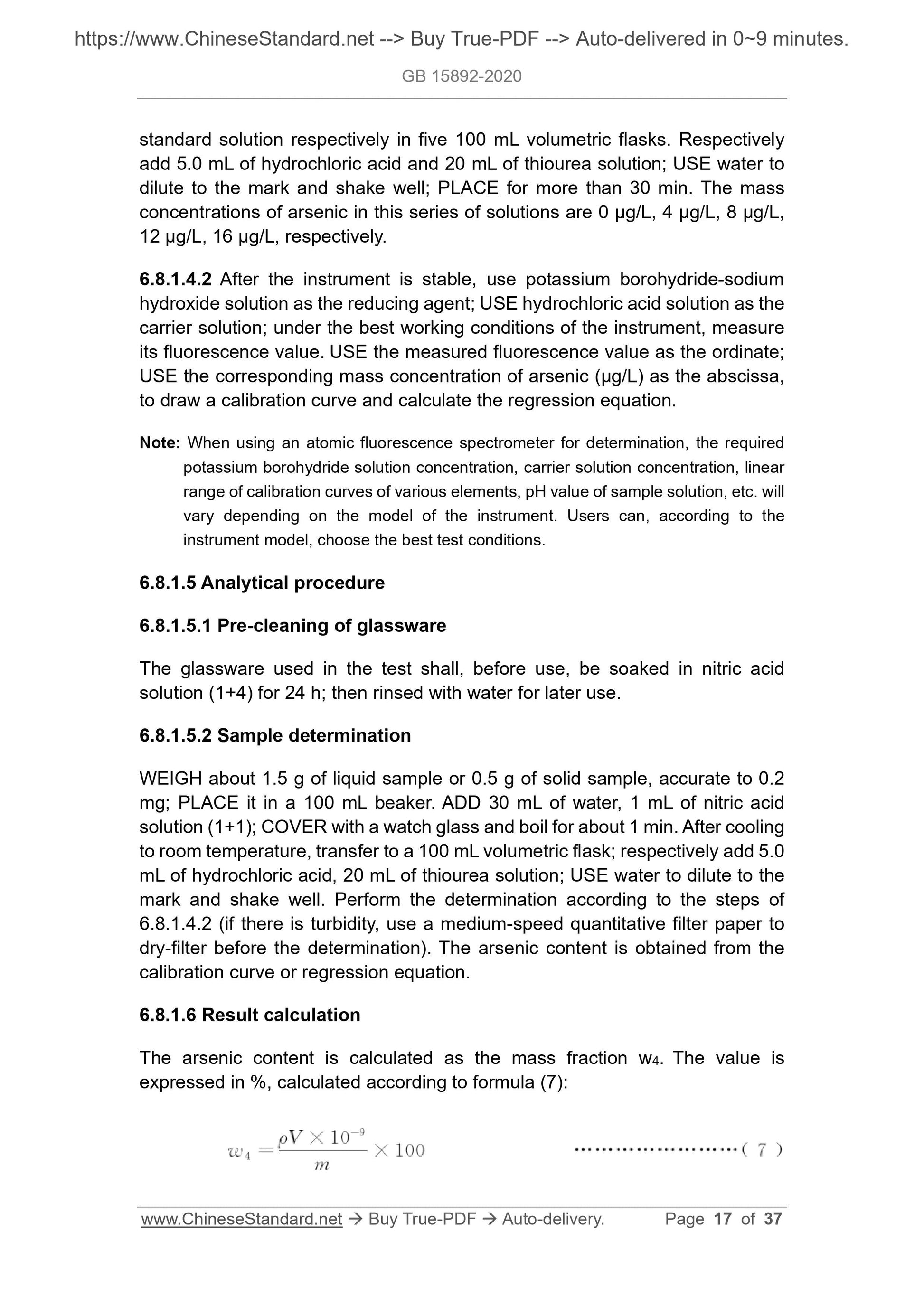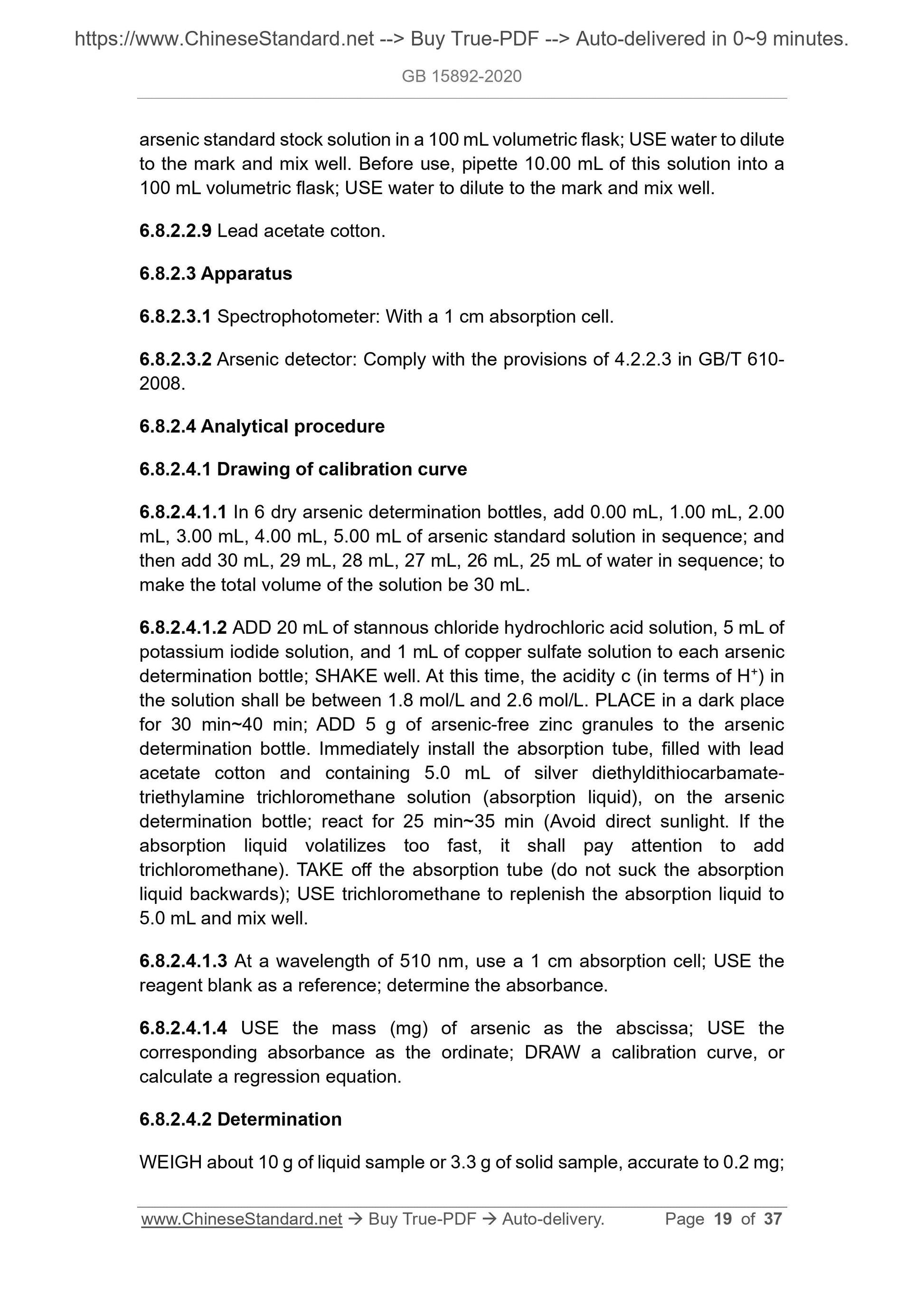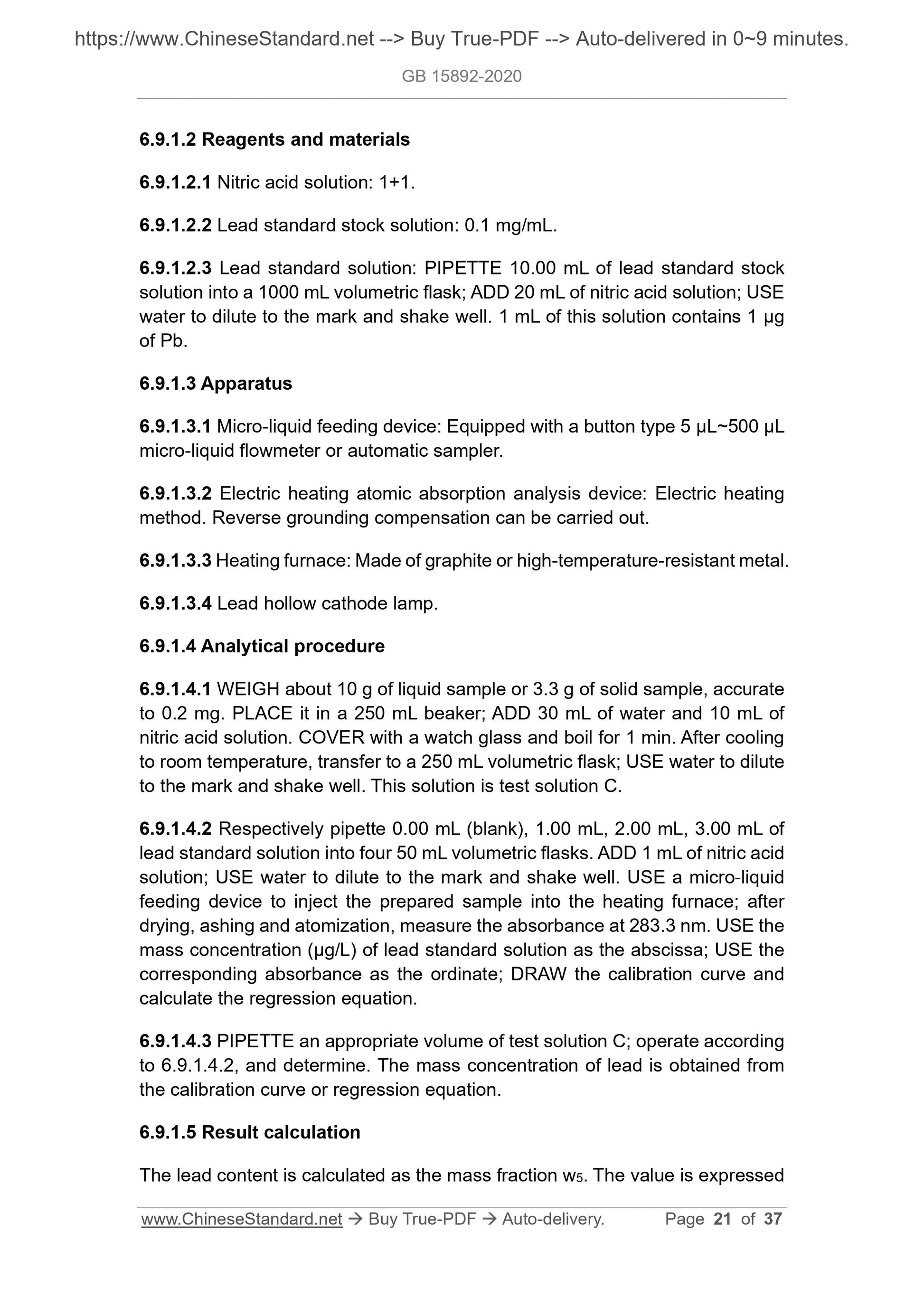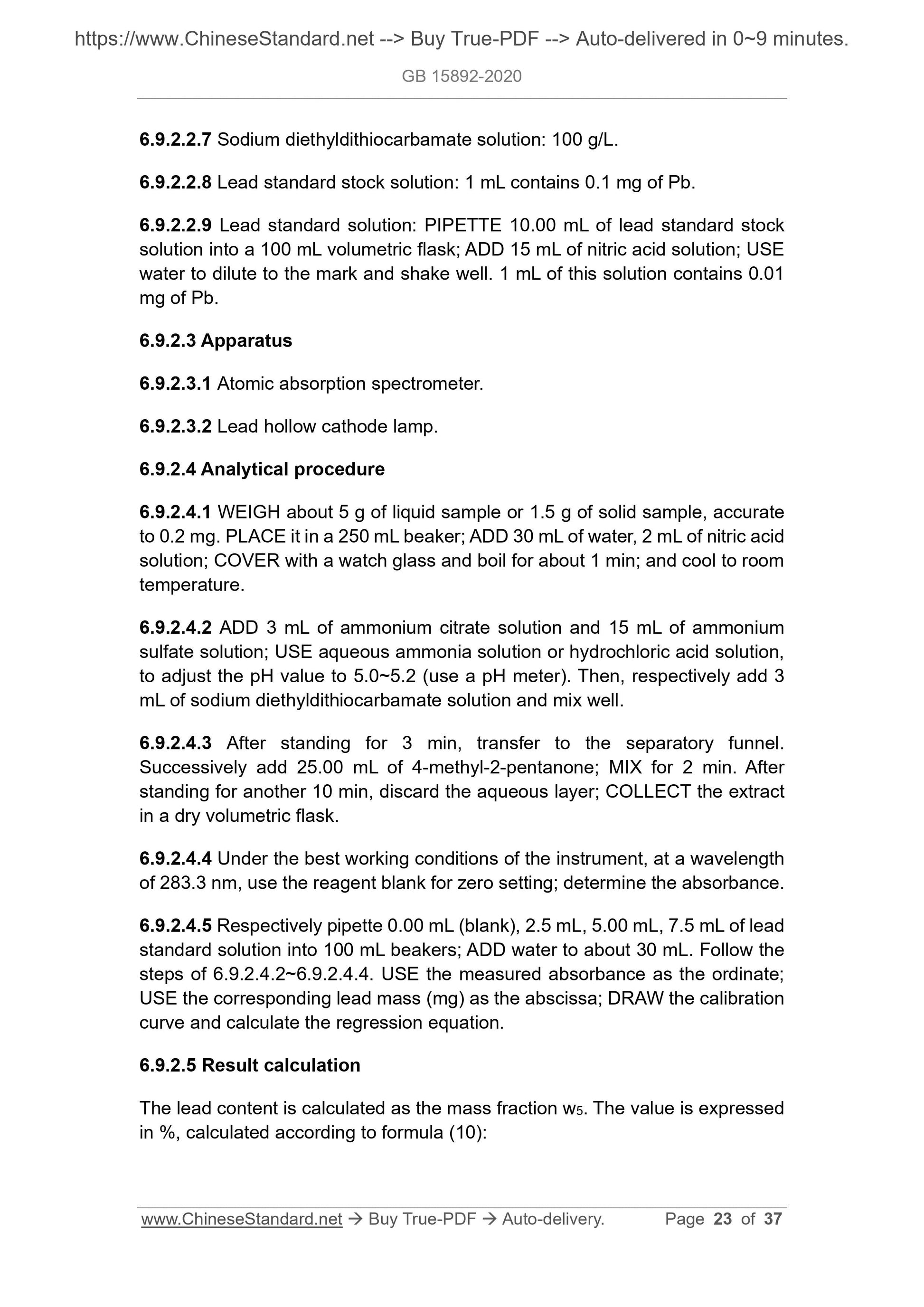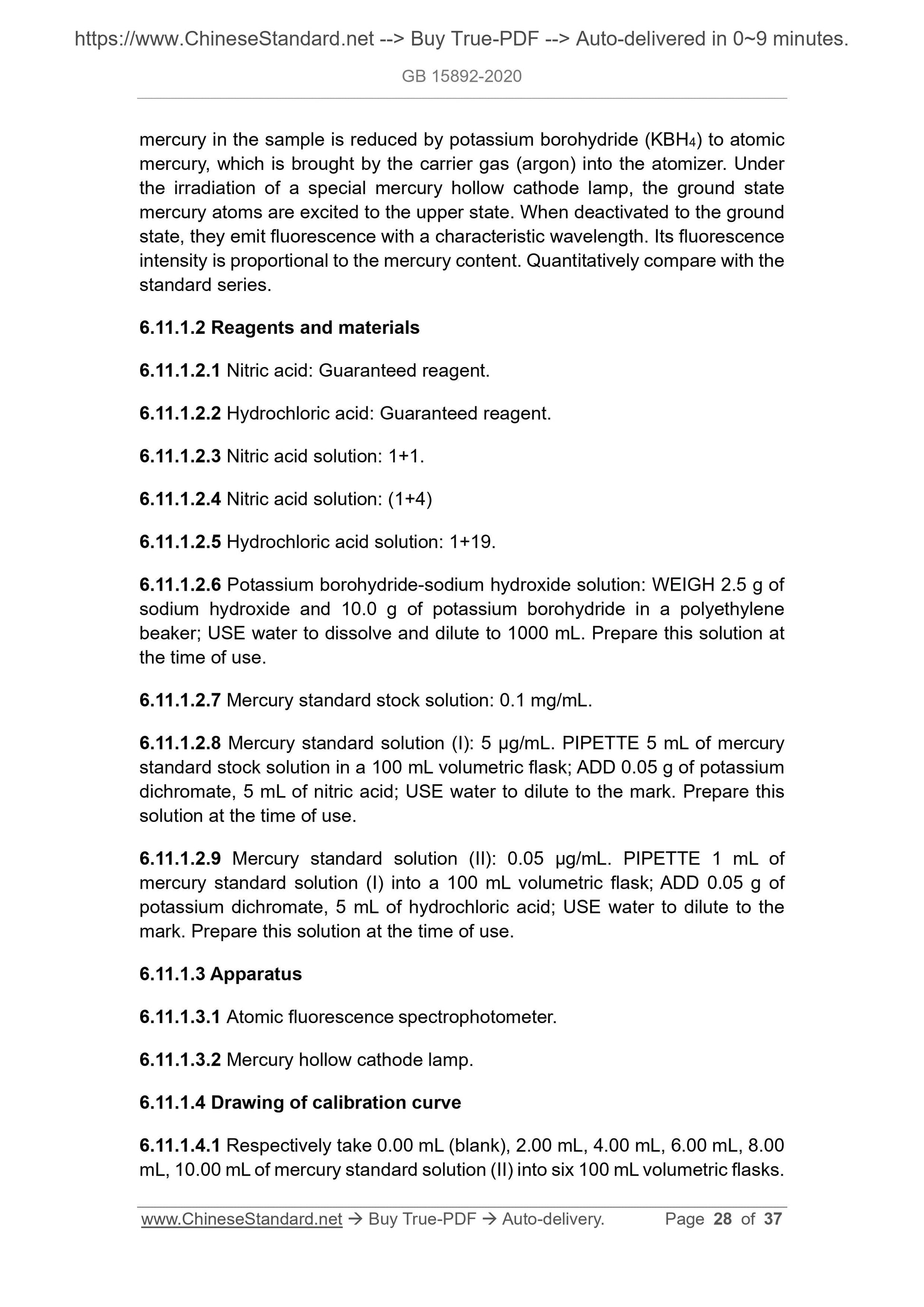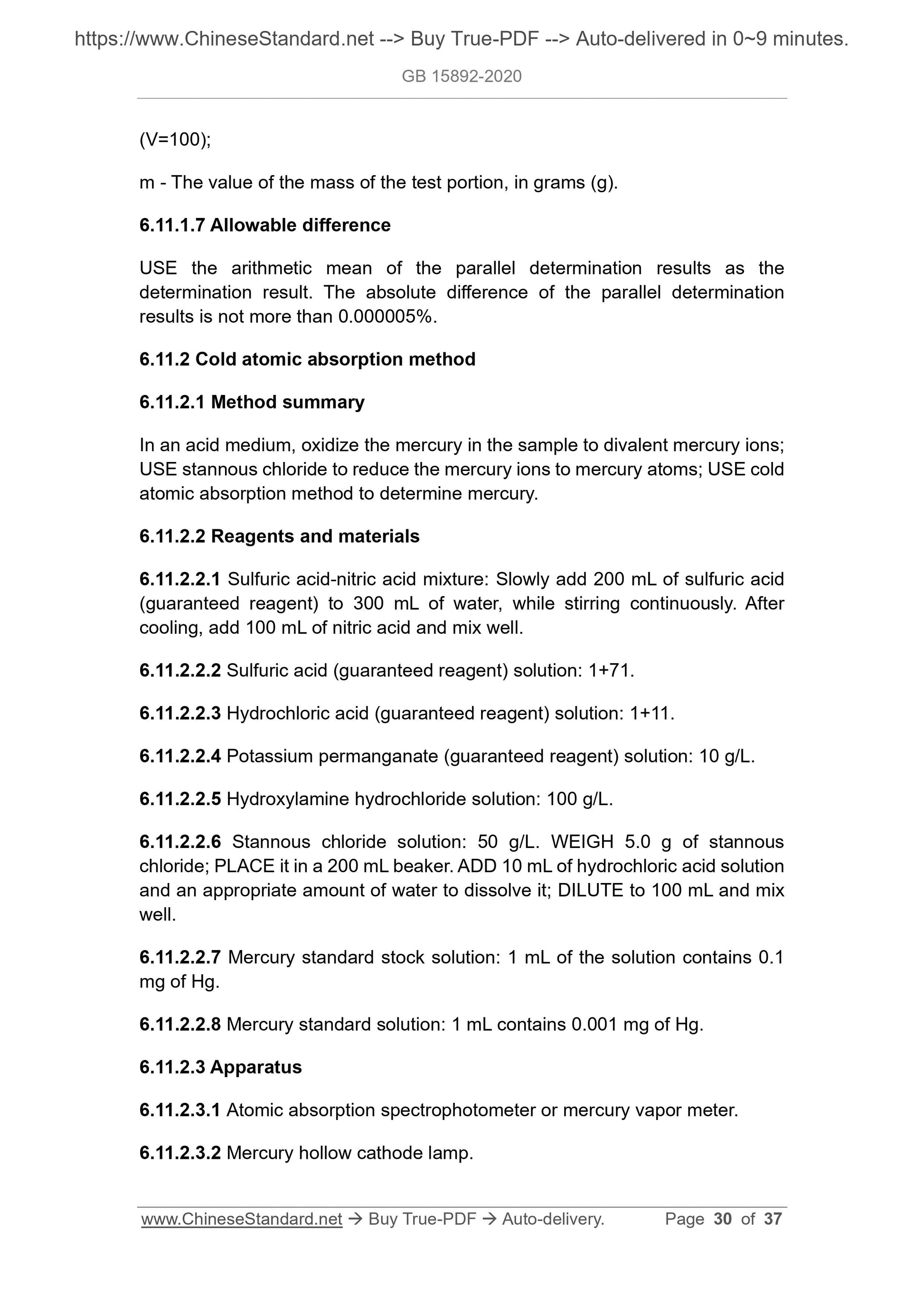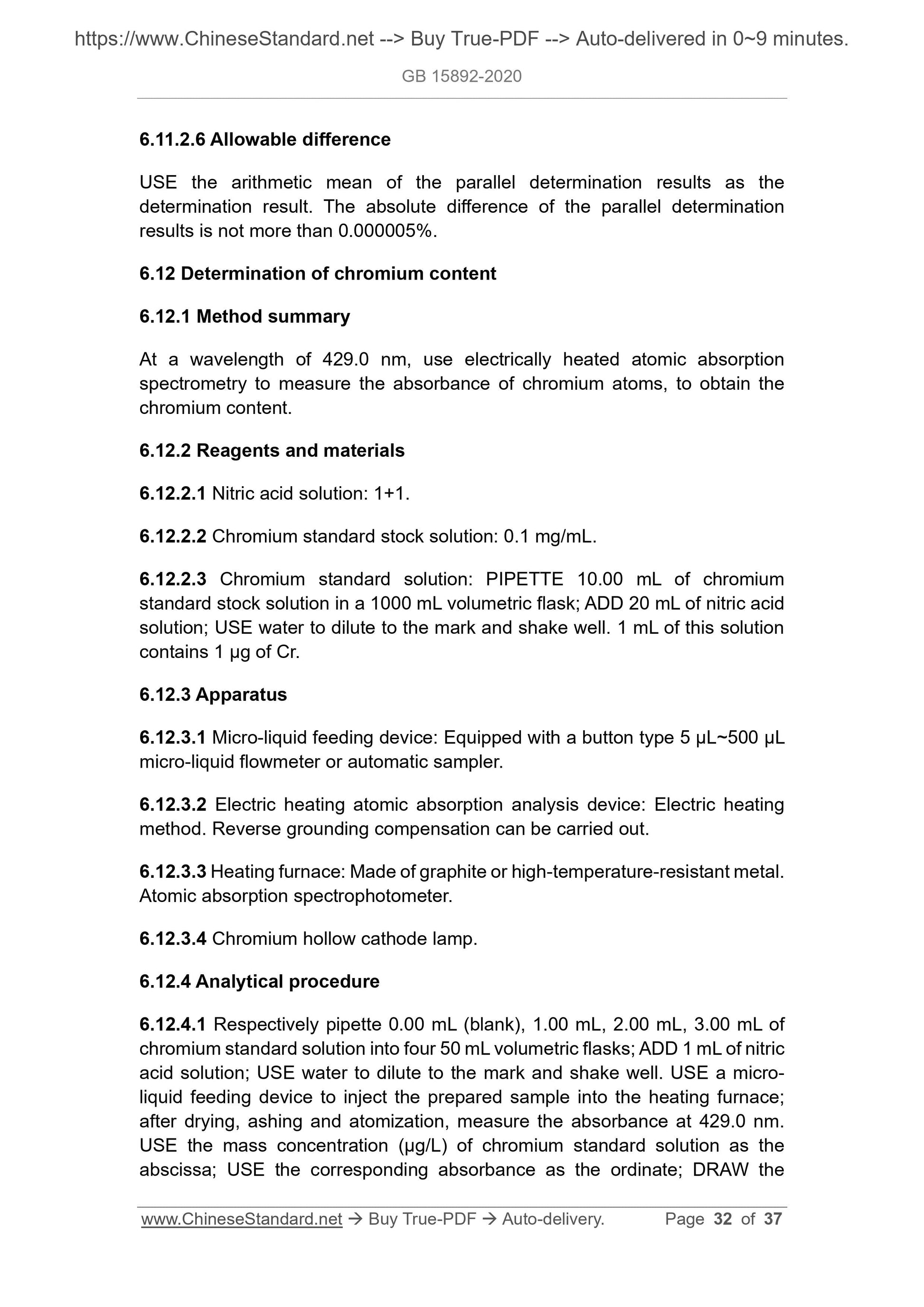1
/
of
12
www.ChineseStandard.us -- Field Test Asia Pte. Ltd.
GB 15892-2020 English PDF
GB 15892-2020 English PDF
Regular price
$245.00
Regular price
Sale price
$245.00
Unit price
/
per
Shipping calculated at checkout.
Couldn't load pickup availability
GB 15892-2020: Polyaluminium chloride for treatment of drinking water
Delivery: 9 seconds. Download (and Email) true-PDF + Invoice.Get Quotation: Click GB 15892-2020 (Self-service in 1-minute)
Newer / historical versions: GB 15892-2020
Preview True-PDF
Scope
This Standard specifies the requirements, test methods, inspection rules,marking, packaging, transportation and storage of polyaluminium chloride for
treatment of drinking water.
This Standard applies to polyaluminium chloride for treatment of drinking water.
The product is mainly used for the purification of drinking water.
Basic Data
| Standard ID | GB 15892-2020 (GB15892-2020) |
| Description (Translated English) | Polyaluminium chloride for treatment of drinking water |
| Sector / Industry | National Standard |
| Classification of Chinese Standard | G77 |
| Classification of International Standard | 71.100.80 |
| Word Count Estimation | 22,246 |
| Date of Issue | 2020-07-23 |
| Date of Implementation | 2021-08-01 |
| Older Standard (superseded by this standard) | GB 15892-2009 |
| Issuing agency(ies) | State Administration for Market Regulation, China National Standardization Administration |
Share
